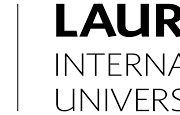Advancing DEI With More Psychological Safety and Authenticity

In Part 1 of this two-part series, I wrote about identifying and removing toxic elements from diversity, equity, and inclusion (DEI) efforts. However, it isn’t just DEI’s combative issues or toxic approaches that can be problematic. Crudely spotlighting diversity and asking employees to take part in the process of enhancing it can cause threats to safety. Any conversation can lead to a threat of stereotyping, various unwelcome social consequences, or merely unwanted attention. Moreover, individuals who do not wish to make their most personal identity or lifestyle choices public may fear that the process could expose them; they may be very uncomfortable choosing between coming out to advocate versus remaining silent.
Start with an awareness that all discussions of DEI topics carry risks. Then think about which values and goals are worth some risk and determine where you might make the most progress with the least risk. It is critical to maximize the likelihood of success by acknowledging perceptions, setting realistic expectations, and considering the role of every level in the organization.
The next step is to move forward cautiously, knowing that the company—not individual employees—bears the greatest responsibility and power to effect change. It’s important, however, not to let fear of backlash make you overly cautious. Progress is entirely possible. Once threats to safety have been addressed, reasonable employees will acknowledge that inequities exist and that remedying them is just.
The following recommendations are intended to support organizations and leaders in finding the way forward, both ethically and practically, at a time of increased social and legal risk. While there is no single set of correct values, pursuing certain processes and frames of thinking can help an organization fulfill its chosen priorities.
Align your efforts with your values.
Choosing to implement a DEI program—and how you execute it—are expressions of values. Even the term “equity” is polarizing, for it implies the pursuit of equal outcomes versus equal opportunity. Some organizations have taken to promoting “DEIB” (B stands for belonging), implying that employees ought not simply be treated well but should also feel that they are accepted and integrated into the workplace and its workforce. Again, this signals something about values and specifically goes a step further than DEI suggests.
Before acting on any DEI-related plans, consider what your organization’s values are and what values it may previously have transmitted to set expectations. Will your program strike staff as a significant change or as an expression of familiar values? Some transformation may always be needed, but implementing a program that violates staff expectations may carry higher costs. In many organizations, difficulty in talking about relevant values may expose a prior failure to establish and communicate values in general.
New terminology for advancing diversity and inclusion probably lies on the horizon, given that DEI has become something about which just about everyone holds an opinion. Many employees may already consider the subject of DEI toxic, even if your program is not. Overcoming such impressions can be difficult, so it would be wise to prepare for a nominal reboot.
If renaming diversity efforts seems right for your organization, the new title should align with your values and intentions. Consider such concepts as fairness, civility, opportunity, equality, equity, individuality, work-life balance, belonging, inclusion, collaboration, achievement, support, safety, empowerment, voice, listening, and not least, diversity. Name the program for what you intend it to achieve, what is being implemented, or both. Announce it as a custom, values-aligned effort. You might, for instance, select fairness, civility, safety, and voice as values-aligned priorities and then find fresh terminology in the concepts to describe your program’s intentions.
Fairness may be the largest umbrella term that could be used. It’s something we’ve discussed in great detail at Ethical Systems. Fairness has the advantage of appealing to everyone and the disadvantage of meaning different things to different people. Using such language can be more inclusive regarding viewpoint diversity when compared with “equity,” which some believe is fair while others do not. This further highlights why each organization’s unique culture must be considered: Equity may be a unifying concept in one company’s culture but polarizing in another.
Use terminology to communicate honestly and transparently, not to mask your intentions. If you wish to pursue values that are not aligned with those of your employees, you’ll have to face this challenge at some point. Engage in empathetic dialogue when you encounter values misalignment.
Focus on noncontroversial areas of improvement.
Legal and social attacks on DEI have generally been focused on potentially illegal discrimination based on gender or race; concerns about competence when merit is perceived to take a back seat to demographic goals; or “woke” theory being implemented in business to fulfill sociopolitical goals. It’s useful to continually consider these arguments as you proceed.
Subscribe to the Ethical Systems newsletter
Not all areas where progress is needed are so controversial. For example, outright discrimination against minorities seems to be decreasing; while it’s not fully eradicated, the need to fight against it is broadly agreed upon. Significant progress, with minimal resistance, is possible within this framework.
While laws and public sentiment have driven improvements in pay equity, there remains room for progress. This is particularly true in such less obvious areas of advancement and career trajectory as promotion and the acknowledgment of individuals and their ideas in meetings and strategic planning—not to mention social ostracization (or incivility) and the attribution of an individual’s success to characteristics other than performance.
To avert the effects of prejudice, both conscious and unconscious, systems should be designed to ensure that prejudice does not manifest in mistreatment or discriminatory practices. Solutions can include well-designed performance management; improved processes for decision-making in hiring and promotion; feedback and speak-up channels for the reporting of concerns; and the structuring of meetings to heighten participation.
DEI efforts could include enhancements to individual empowerment in the form of job crafting—the ability of individuals to reshape their jobs in accordance with their skills and goals—with a focus on addressing challenges that seem to stymie professional advancement by members of minorities. Such interventions could benefit both workers and organizations by enabling better staff performance.
Demonstrate competence and commitment to psychological safety.
Maintaining psychological safety and working toward greater inclusion are not novel concepts. They should balance nicely when the personnel implementing a program are properly qualified, the program is based on solid theory and techniques, and the entire endeavor is accompanied by appropriate feedback and data collection.
Here are some recommendations for a successful DEI program:
- Ensure that appropriate internal or external expertise is driving your program
- Explain how the program is unique and specific to your organization
- Clearly identify the theories and aims of your approach to all involved
- Identify key metrics, and track changes to determine success—and what that means
- Implement evidence-based approaches to improve the metrics you’ve identified
- Ensure that anonymous communication channels are open for feedback
Any aspirations or unease stirred by your DEI program need to be addressed. You should determine whether the programs you implement are succeeding, failing, doing harm, or achieving nothing of consequence.
DEI is an ambiguous term that has been used to justify many different things, which accounts for some of the backlash. Efforts to help people comprehend their subconscious biases are generally well intended; most employees can experience this sort of training comfortably so long as it doesn’t bleed into a process of blaming and shaming. You don’t want your DEI training sessions to become battlegrounds in which advocating anything is vilified, or individuals are put in the position of representing their race, gender, religion, or generation. Your employees are individuals, not clichés.
When a DEI program is being implemented, you can expect staff to form instant opinions about it based on programs they’ve heard about, media reporting in whatever information bubble they favor, and assumptions regarding your company’s goals in launching it.
A DEI rollout should thus begin with communications and meetings or activities that demonstrate positively what the program will be like and the values from which it has been drawn. You can thereby authentically encourage buy-in. A good staff experience in one piece of the program can induce greater openness and reduced stress in anticipation of later parts.
Organizations should demonstrate that they are taking the lead on DEI at the systems level. They should banish the idea that the solution to inequities is to “fix” employees who harbor prejudice. Employees don’t want to have a finger pointed at them, and training at work could never fully mend such a broad societal issue. You certainly don’t want your program’s success to depend on correcting people’s thinking so much as ensuring that their behavior is appropriate, respectful, and inclined toward teamwork. DEI should be presented as a complex set of positive policies and procedures that are supported by training employees to successfully participate in them.
Instead of fretting that “bad apples” in your organization might wreak havoc, design an environment in which bad apples can’t wield much impact.
Further problems can be avoided by actively educating staff on the issues that plague discussions of diversity, equity, and inclusion. There are very good reasons that research is conducted on group averages, for example. This can be introduced, explained, and accompanied with an explanation of why generalization is flawed. You might explain accurate language so employees learn that such terms as “on average” can convey statistics about groups while acknowledging variation among the individuals in any group. Such educational explorations can increase staff willingness to discuss certain topics just as they avert less accurate (and more harmful) conversations.








